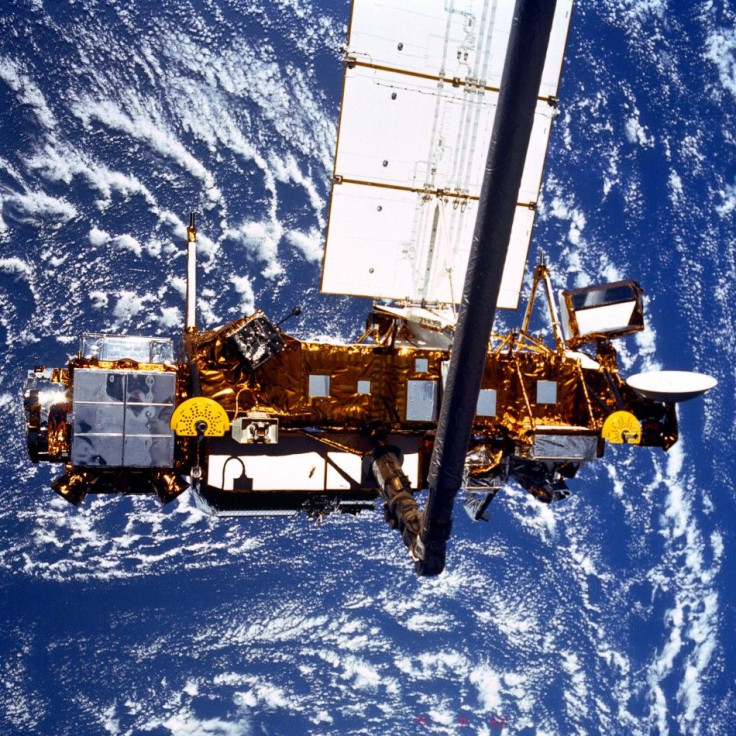Dead Satellite Will Plunge to Earth by End of September, NASA Says

A defunct satellite ready to fall back to Earth will make its final plunge during the last week of September, NASA officials say.
The spacecraft, an old NASA climate probe called the Upper Atmosphere Research Satellite (UARS), was decommissioned in 2005 and has been slowly losing altitude since. On Monday, NASA issued an update that said the satellite is expected to plummet at the end of September, going back on previous estimates by NASA and the U.S. military that predicted a late September, early October drop.
According to Nicholas Johnson, NASA's chief scientist for orbital debris, the odds of any specific person getting hit are about one in 21 trillion, MSNBC reported. That's a chance of about 0.0000000001 percent. There's a much greater, but still minimal, chance that a piece of the satellite will hit someone on Earth: one in 3,200, or about 0.03 percent. The most likely scenario is that the satellite falls somewhere over an ocean.
Earth is big, the satellite is small; the chance of it hitting a person is very, very small, said Victoria Samson, the Washington Office Director of the Secure World Foundation, an organization dedicated to the peaceful use of outer space. While the idea of something coming at you from outer space is unnerving, there are a lot more realistic threats we should be concerned about. The actual impact to any person is fairly minimal.
Presently, NASA can't confirm the exact trajectory or time of the UARS plunge, which depends on solar weather, variations in Earth's gravitational field, and the orientation of the satellite, Space.com reported.
Once the satellite reenters the Earth's atmosphere, NASA will be able to project with more accuracy the general area within which it will land, but it will be a wide area, not specific, and even those projections could be wrong. One of the problems with predicting the landing spot is that the satellite will break up once it reenters the atmosphere. Pieces of various sizes -- the largest, probably 300 pounds, could land across an area of 500 miles.
The space agency first announced the spacecraft's impending dive last week. Since then, experts have been able to refine their tracking of the satellite, and confirmed its present orbit.
In a statement, NASA said that as of Monday, the orbit of the UARS was 145 miles by 165 miles (235 km by 265 km).
The $750 million UARS spacecraft was launched in 1991 aboard NASA's space shuttle Discovery to study ozone and other chemical compounds in Earth's atmosphere. Since then, it has tracked the rise and fall of solar activity through the sun's full 11-year cycle and ... nailed down the cause and effect involving chlorofluorocarbon use and the extent of Earth's ozone hole, MSNBC reported.
NASA didn't plan quite as well as it could have for UARS's eventual fall, and the satellite's fuel supply -- which would have allowed it to fall harmlessly into the Pacific Ocean - ran out six years ago, according to ABC News.
© Copyright IBTimes 2024. All rights reserved.





















